What is Cold Outreach and How to Do it in 2024 [10+ Strategies]
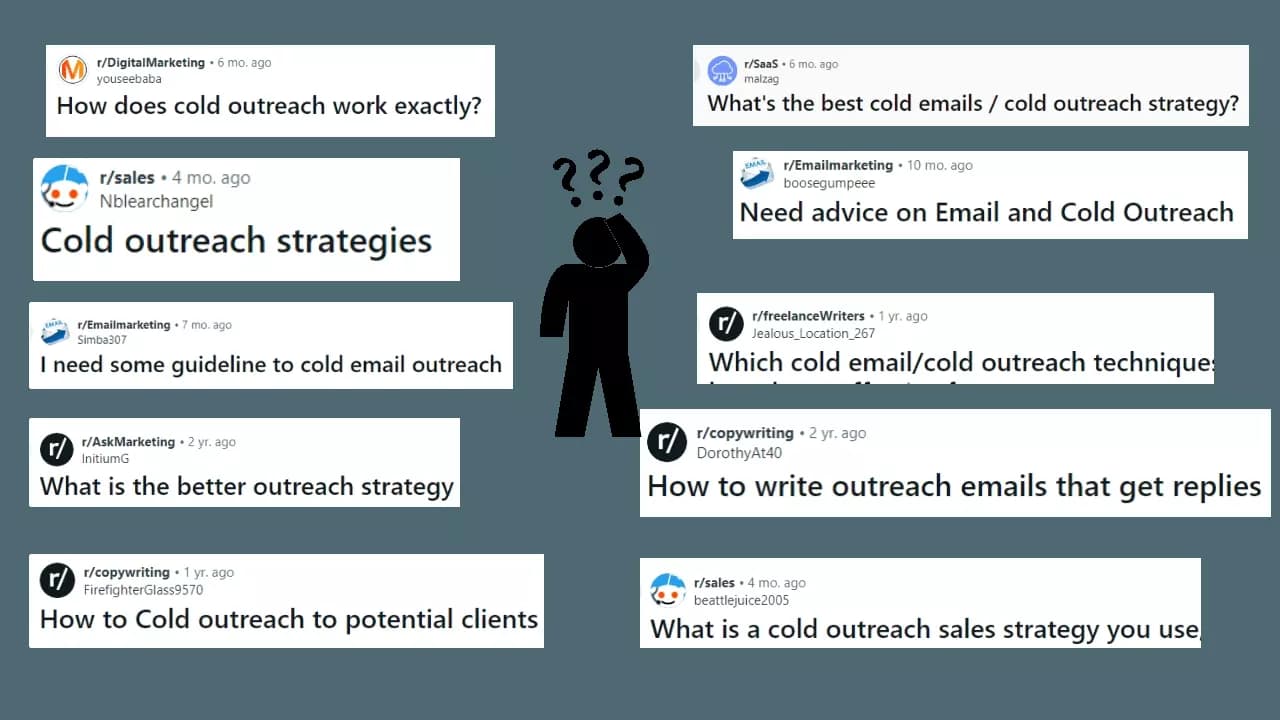
But a lot of people don’t know what is cold outreach, best cold outreach methods, and how to do it effectively in 2024.
This article is going to be a free Cold Outreach 101 masterclass for you. I’ll cover everything you should know about cold outreach.
We’ll learn:
- What is cold outreach?
- Cold outreach methods
- How to do cold outreach in 2024?
- Best cold outreach strategies to increase conversion
- Common mistakes to avoid in cold outreach
Let’s start with a layman’s definition of cold outreach.
What is cold outreach?
Cold outreach is like introducing yourself to a stranger and trying to become friends.
You don't know them, but you reach out hoping they'll be interested in what you have to offer.

It is the process of reaching out to potential customers or clients who have no prior knowledge of your business or product.
But if there’s cold outreach, does that mean there’s warm outreach too?
Difference between cold and warm outreach
Unlike cold outreach where you're contacting complete strangers, warm outreach involves reaching out to people you have some sort of connection with.
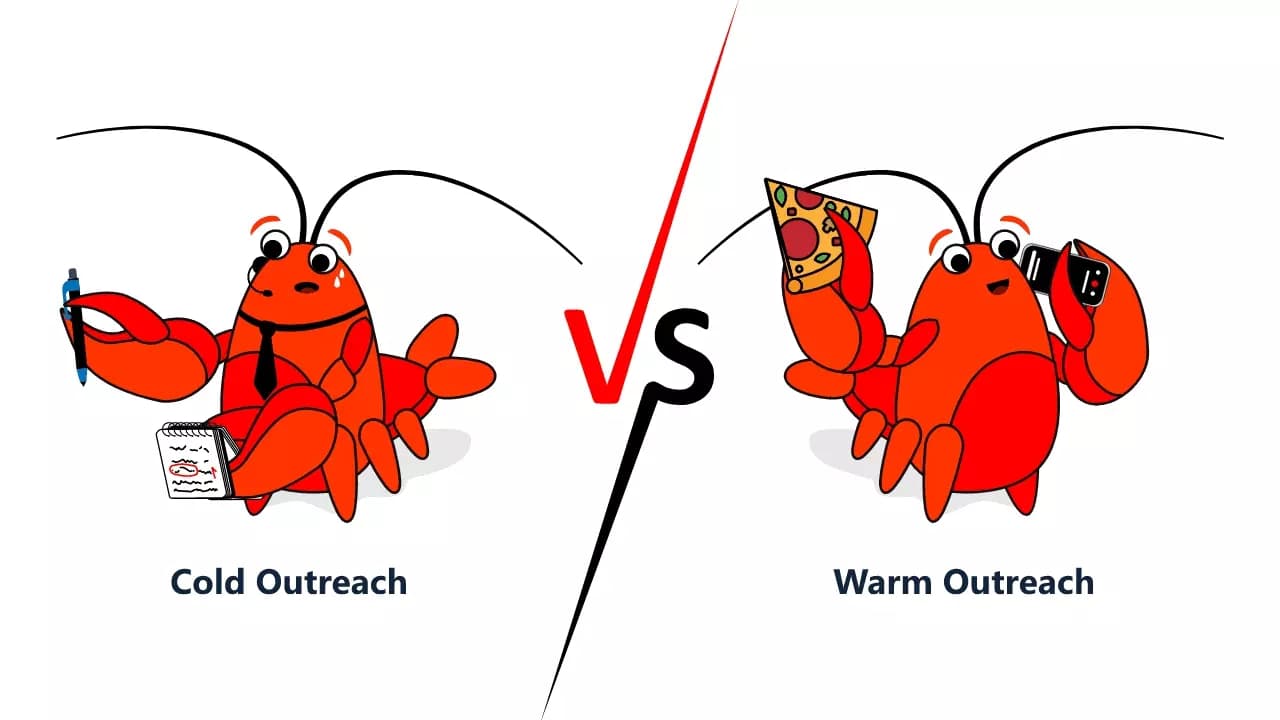
Maybe you've met at a conference or connected on social media. It's easier to start a conversation because you have something in common.
Warm outreach is a highly effective strategy to acquire quality leads. But since it’s not today’s topic, I’ll keep it short and jump to the differences.
Here are main differences between cold and warm outreach:
| Aspect | Cold Outreach | Warm Outreach |
|---|---|---|
| Target Audience | Broad audience with no prior knowledge of your business | Targeted audience with prior knowledge or interaction |
| Introduction | Requires a strong introduction to capture interest | Easier to establish a connection due to prior familiarity |
| Personalization | Limited personalization due to lack of information | High level of personalization based on previous interactions |
| Response Rate | Generally lower response rates | Generally higher response rates |
| Examples | Cold emails, cold calls, unsolicited LinkedIn messages | Follow-up emails to previous customers, messages to social media followers, outreach to webinar attendees |
Warm outreach is great but as I mentioned, it requires some sort of prior connection. This makes your reach limited.
Cold outreach actually helps you build those connections and use them for warm outreach.
I’ll cover how to use cold outreach to build relationships and use that bond to target customers with warm outreach later in the article.
But the question of the millennium is – is cold outreach still relevant in 2024?
Does cold outreach still work?
While doing research on this topic, the most commonly asked question I found online was – is cold outreach dead?
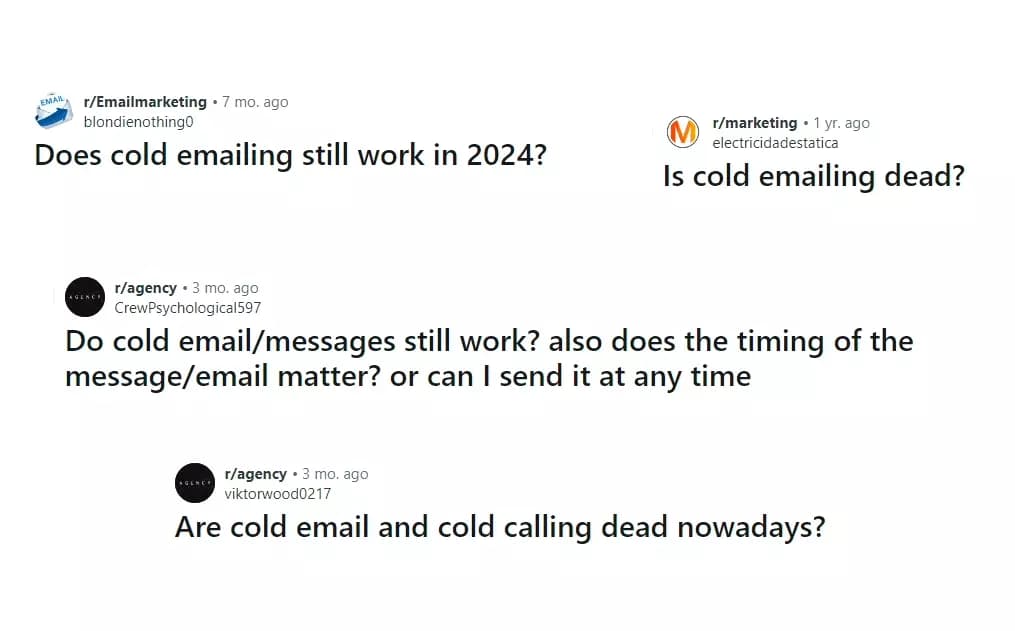
Yes, cold outreach can be just as effective as other customer acquisition methods when executed correctly.
In fact it has a lot of benefits for small and medium sized businesses.
- Many potential customers are unaware of your business
- Cold outreach is often cheaper than other marketing methods
- It lets you directly reach decision-makers, skipping gatekeepers
- You can have more personalized conversations with direct contact
It’s one of the most important aspects of B2B marketing and an effective strategy for B2B lead generation.
Importance of cold outreach in B2B marketing
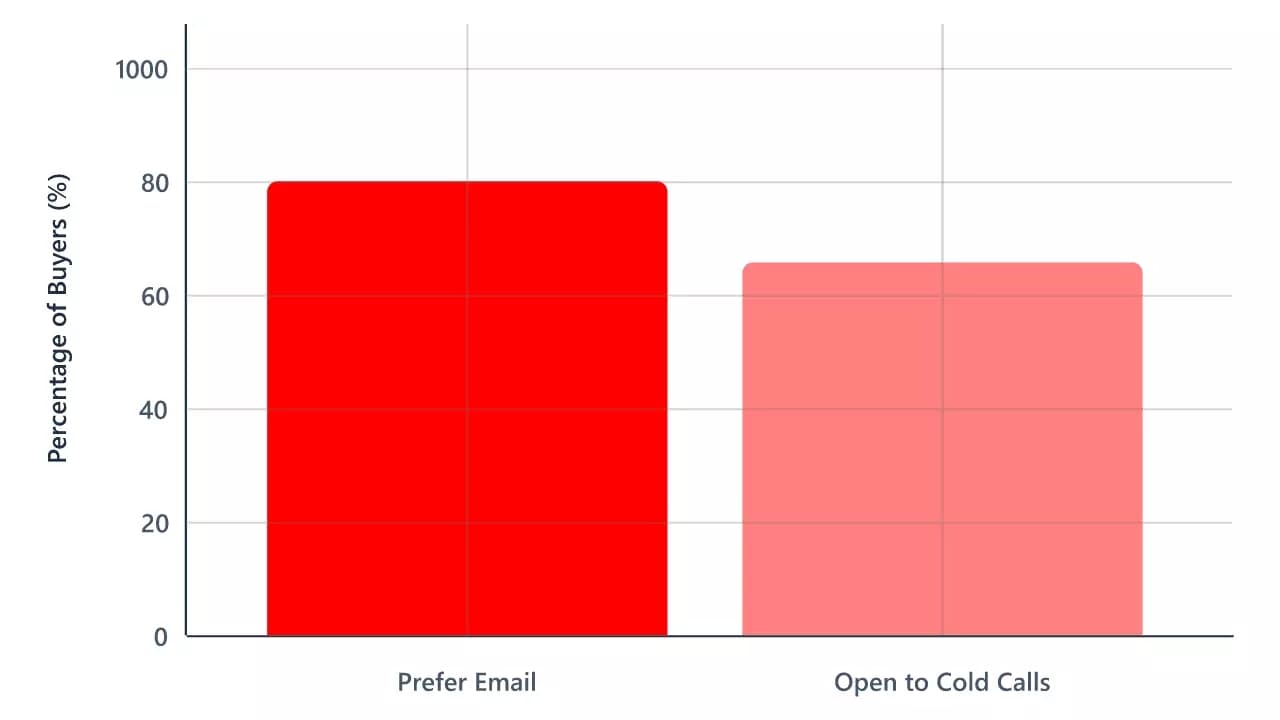
In terms of B2B, cold outreach can help you in:
- Direct engagement with potential customers
- Generating new leads
- Entering new markets
- Lowering cost compared to other strategies
- Instant feedback from potential clients
- Initiate and nurture client relationships
- Easily scalable based on needs
- Proactive outreach offers a competitive edge
But is cold outreach equally beneficial for b2c sales?
Is cold outreach good for every business?
It works best for B2B companies where direct engagement with decision-makers is crucial. For B2C businesses, it may be less effective due to different consumer behaviors.

For example, for a B2B company offering ERP solutions, cold outreach to CIOs can effectively highlight product benefits tailored to business needs.
In contrast, a B2C company selling headphones may find cold outreach less effective, as consumers prefer online reviews and ads for purchasing decisions.
Also certain industries do benefit more from cold outreach compared to others.
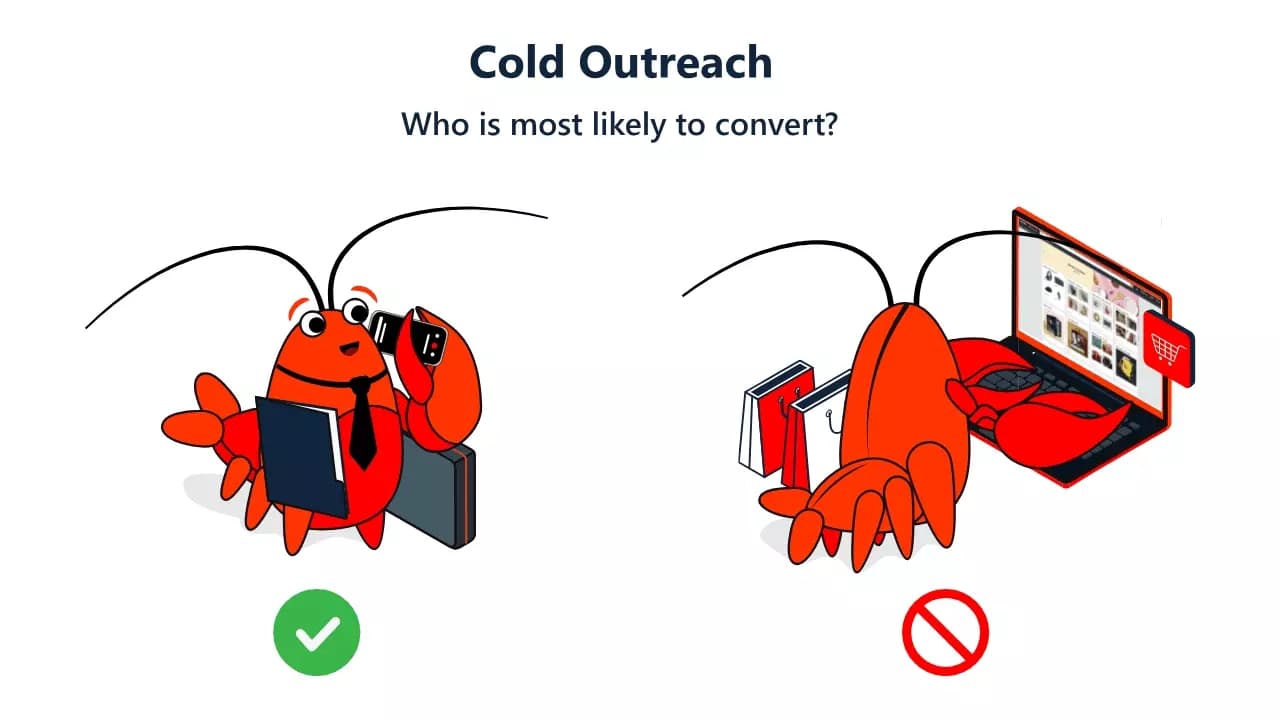
Industries such as tech, consulting, or professional services often benefit more from cold outreach.
That's because they deal with complex products or services that require personalized explanations and direct engagement with potential clients.
For example, a cybersecurity company can use cold outreach to explain their product to IT managers, addressing specific security concerns and regulatory requirements.
Industries where cold outreach is effective
| Industry | Examples |
|---|---|
| Technology | Software solutions, cybersecurity, SaaS platforms |
| Consulting | Management consulting, IT consulting, business strategy |
| Professional services | Legal services, accounting, financial advisory |
| B2B Sales | Industrial equipment, manufacturing, supply chain solutions |
| Healthcare and medical devices | Medical equipment suppliers, healthcare IT solutions |
| Education and training | Corporate training programs, educational software |
| Real Estate | Commercial real estate, property management services |
On the other hand, the retail industry might find cold outreach less effective. Retail businesses often target a broad consumer base.
Consumers in this sector are more influenced by advertising, social media, and word-of-mouth rather than direct cold outreach.
Industries where cold outreach is less effective
| Industry | Examples |
|---|---|
| Retail | Clothing, consumer electronics, household items |
| Food and beverage | Restaurants, cafes, packaged food products |
| Entertainment | Movies, music, video games |
| Travel and hospitality | Hotels, travel agencies, tour operators |
| Consumer goods | Personal care products, cosmetics, home decor |
| Automotive | Car dealerships, auto repair shops |
| E-commerce | Online marketplaces, consumer goods e-stores |
Now that we know the answers to what, why, and who about cold outreach, let’s learn where to do cold outreach.
In other words, what are the most effective methods of cold outreach?
3 most effective methods of cold outreach
Cold outreach can be a powerful tool when done right. To help you get the best results, I've identified the 3 most effective methods.
Each of these approaches can help you connect with potential clients and turn cold leads into valuable opportunities.
| Method | Description | Conversion rate | Good for |
|---|---|---|---|
| Cold emailing | Unsolicited emails to prospects | 5 to 15% | Broad reach, detailed info, less intrusive |
| Cold calling | Unsolicited phone calls to prospects | 4 to 10% | Personal interaction, instant feedback, handling objections |
| LinkedIn outreach | Unsolicited LinkedIn messages | 10 to 20% | Targeted networking, professional connections |
Let’s do a breakdown of each method one by one.
1. Cold Emailing
Cold emailing is a powerful and widely-used cold outreach method that allows a direct way to reach potential clients and build connections from scratch.
In cold emailing, you send unsolicited emails to potential customers or clients who have not previously interacted with your business.
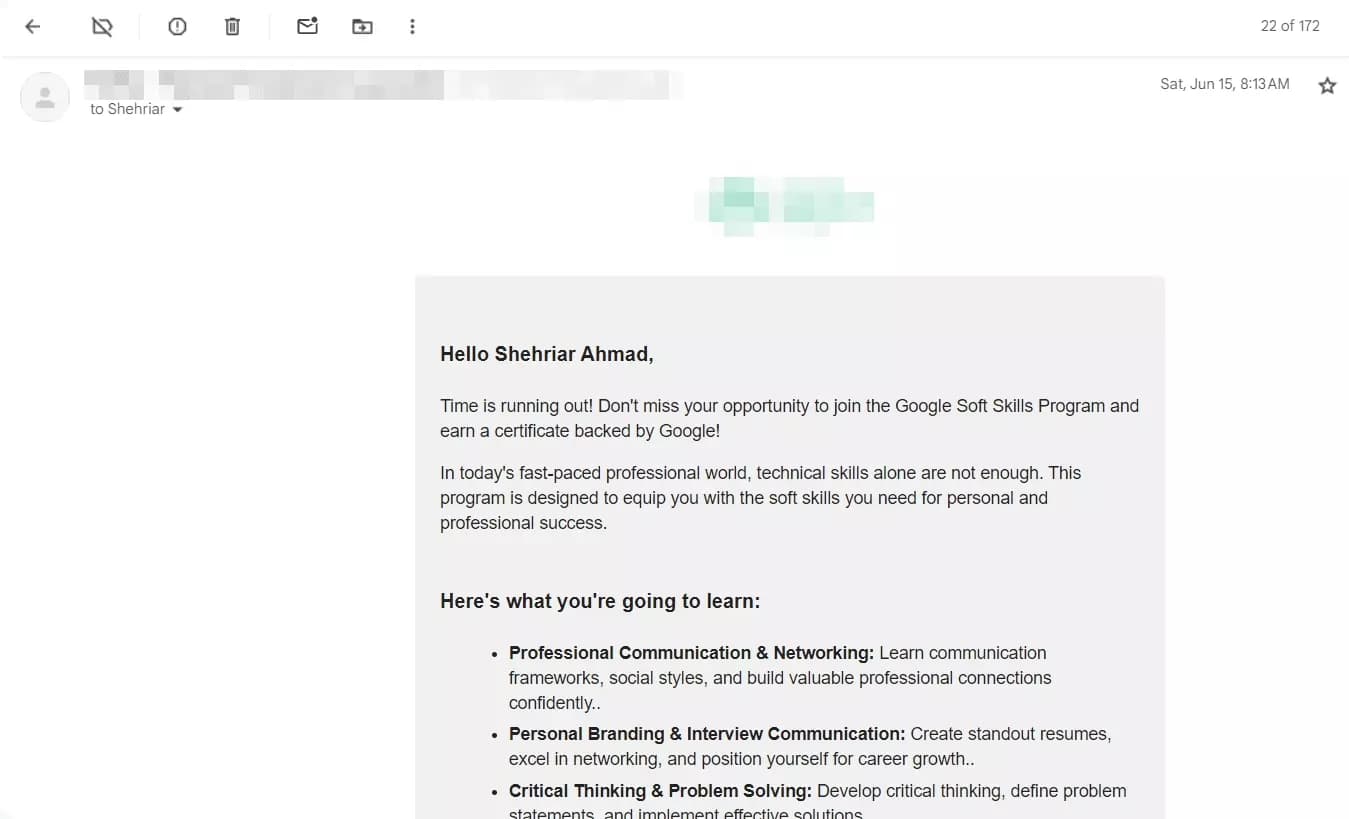
The primary objective is to introduce your products or services, build relationships, and generate interest among recipients who fit your target audience profile.
Unlike spam, cold emailing is a carefully targeted approach, focusing on individuals or businesses that are likely to benefit from your offerings.
How cold emailing works
Cold emailing generally involves 4 key steps, but campaigns can be customized to ensure it’s both effective and respectful of the recipient’s time:
- Identify and research potential leads who fit your target audience
- Write a concise, personalized email with a strong value proposition
- Send the email and monitor metrics like open rates and responses
- Send polite follow-up emails to encourage engagement
But how effective is it? Let’s see some statistics.


Snow collected email addresses of 1000 busiest business people in the US including 500 C- and VP-level executives from the Fortune 500, and 500 C-level execs from the Inc 500.

Then they created multiple cold email templates asking one simple question “tell us what kind of cold email you’d prefer to receive”.
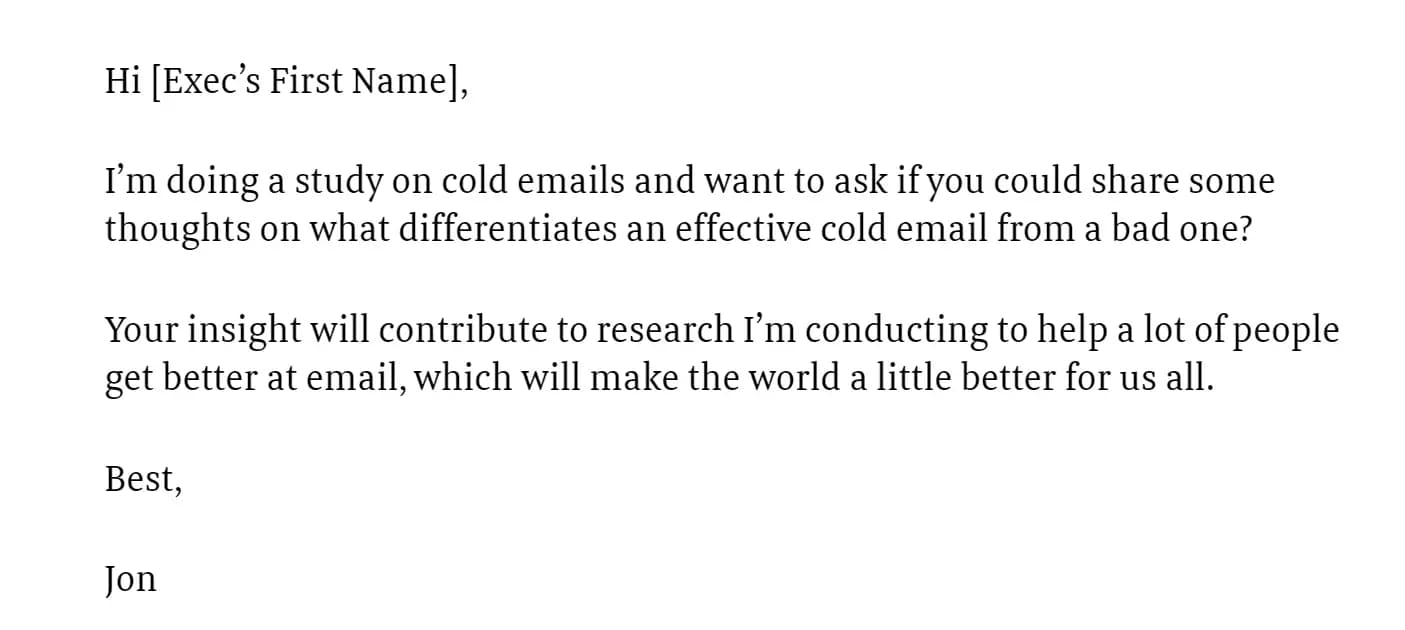
They experimented with subject lines, purpose, length, and requests. As a result out of those 1000 emails;
- 707 emails delivered successfully
- 45.5 % of those emails were opened
- 12 people out of 700 replied
Wait, 12 people? It’s just 1.7%. How is it impressive? Considering the position of prospects and the fact that they used different emails, 1.7% is good.
It is an achievement to get a reply from 12 busiest people in the US.
2. Cold Calling
Cold calling is another cold outreach technique where a salesperson contacts potential customers by phone without prior interaction or appointment.
The objective and target audience of cold calling is similar to cold emailing but in cold calling, we get an immediate response from the prospect.
How cold calling works
Cold calling follows a structured process designed to maximize the chances of engaging the prospect and converting them into a customer:
- Identify potential leads and create a targeted prospect list
- Develop a clear sales pitch tailored to the prospect's needs
- Call the prospect and engage them, uncover needs, demonstrate value
- Address objections confidently, providing solutions
- Schedule a follow-up if interested
How effective is cold calling?
Cold calling remains a highly effective method for generating leads and driving sales, particularly in the B2B space.
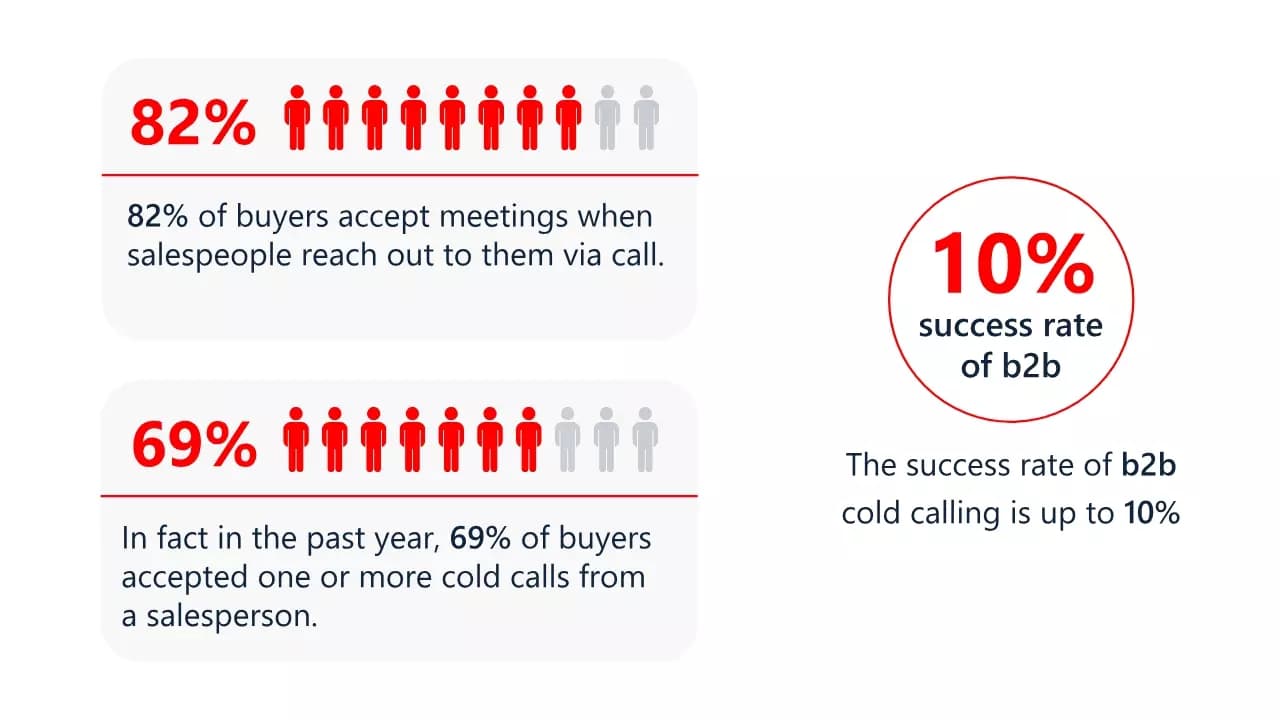
These stats clearly tell us that with the right strategy, cold calling can be a powerful tool for converting prospects into customers.
Ecomply.io, a data protection SaaS company, used cold calling to target Data Protection Officers (DPOs) in Germany.
They crafted a tailored sales pitch that directly addressed their pain points, such as the need to save time and manage multiple clients efficiently.
The results were crazy. They successfully reached 29% of the prospects they contacted.
Out of those 29% successful connections, Ecomploy qualified 69% leads and out of those 69% they converted 51.7% into customers.
This makes their end conversion rate approximately 10.35%.
3. LinkedIn Outreach
LinkedIn outreach is super effective in the B2B space, where decision-makers and professionals are active on the platform.
The primary goal of LinkedIn outreach is to build relationships, generate leads, and drive business opportunities.
How LinkedIn outreach works
Linkedin outreach typically involves 6 major steps to engage prospects and foster professional relationships.
- Create a strong LinkedIn profile to build credibility
- Find potential leads using LinkedIn tools
- Send personalized connection requests to build relationships
- Send valuable messages after connecting to nurture leads
- Maintain engagement through consistent interaction
- Track performance to refine your strategy
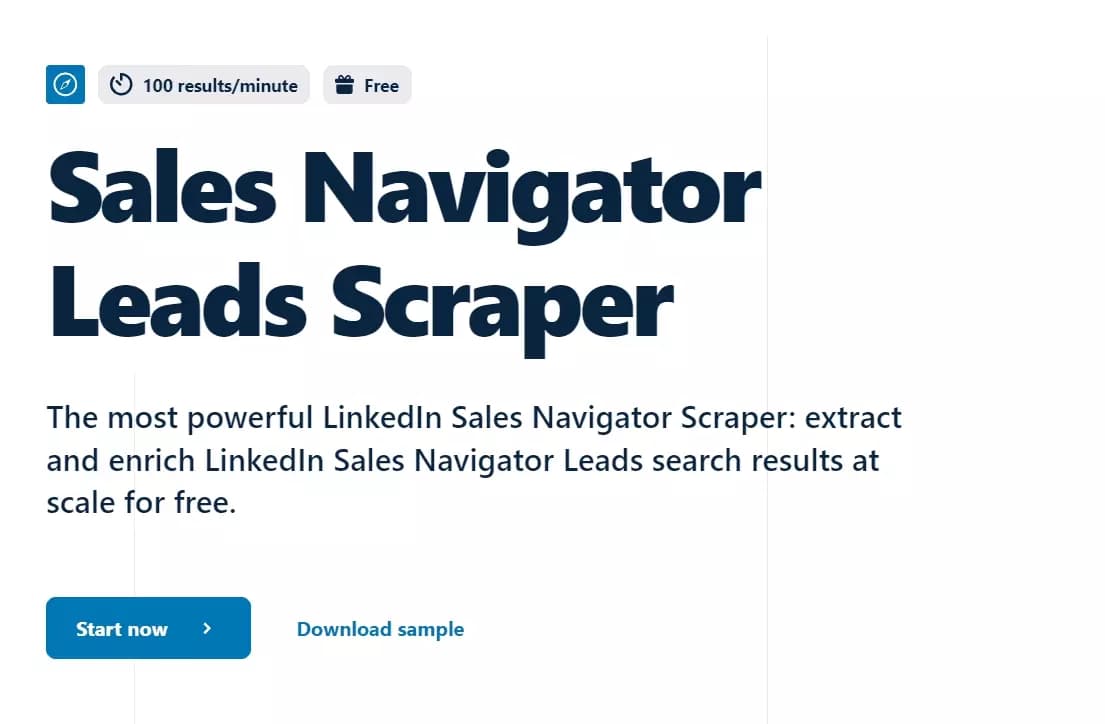
How effective is LinkedIn outreach?
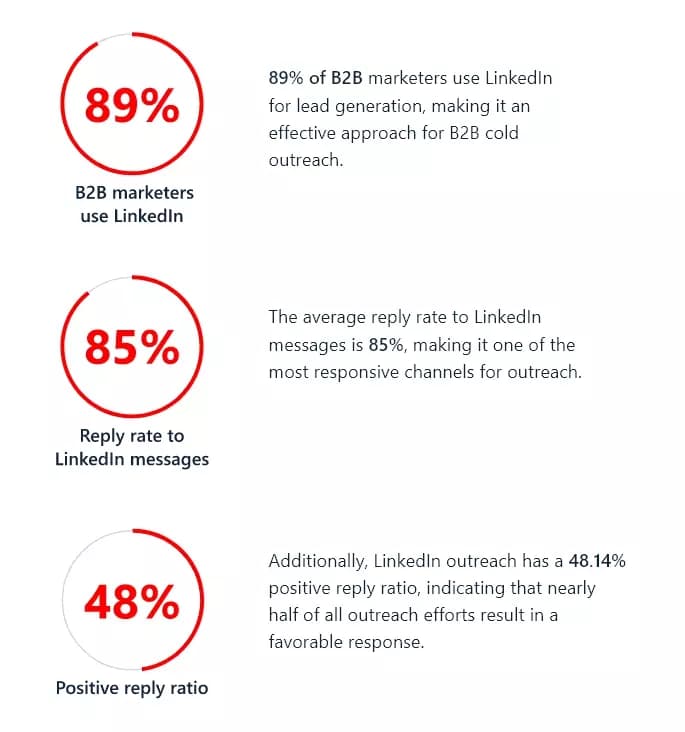
Nikola Velkovski, CEO & Co-Founder of HeyReach, successfully doubled his conversion rate through strategic LinkedIn outreach.
He targeted users who signed up for a free trial of his product, sending them connection requests followed by personalized messages.
The result; out of 162 connection requests sent, 104 were accepted, a solid 64.1% acceptance rate.
Then he sent tailored messages to 84 connections and successfully got 21 replies. This makes the response rate 25.3%.
Extra: Direct Messaging (Social Media and SMS)
Direct messaging is a strategy that I’ve personally found to be incredibly effective, especially in my freelancing gig.
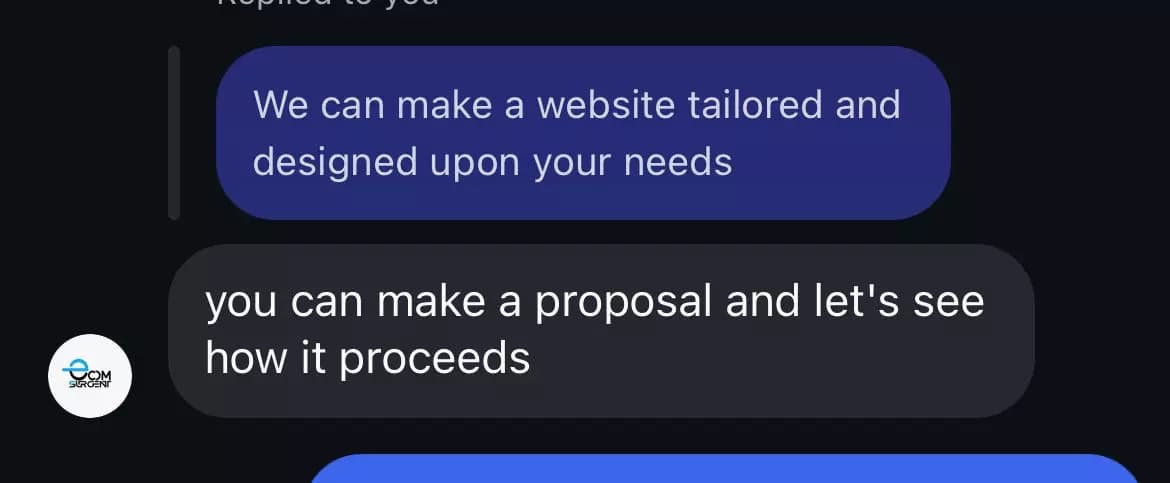
While I didn’t come across many big companies using it with great success, it worked wonders for me in finding potential clients and building relationships.
This method involves reaching out to prospects directly through social media platforms or SMS.
With a personalized pitch and building a one-on-one connection, it can be a game-changer when done right.
How direct messaging outreach works
It’s a simple and straightforward 4 steps process which relies highly on personalization and conveying the message perfectly.
- Use social media and Google Maps to find potential clients aligned with your services
- Develop a concise, tailored pitch highlighting your value proposition
- Send direct messages in your prospect's social media chat box or via SMS
- Send follow-ups only if the prospect shows some interest
I primarily use Facebook Pages and Google Maps listings for finding leads.
Initially I had to manually collect leads from these platforms. The process was so tiring.
- Go to the platform and type targeted keyword and select location
- Manually visit each page/Maps listing
- Manually copy business details from each listing in an Excel Sheet
- Reach out to the businesses via SMS or Messenger
But Lobstr makes it a lot easier to collect leads. For Facebook pages, I use the Facebook Pages Search Export scraper to collect all vital details from FB pages in a few clicks.
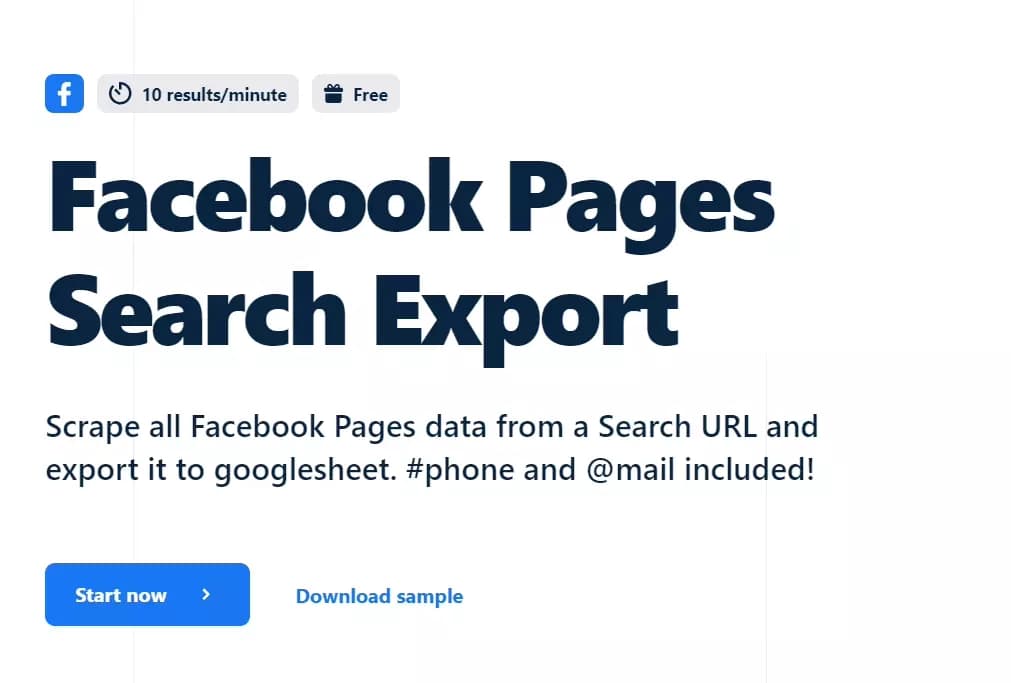
Similarly, for Google Maps, you can use the Google Maps Search Export tool to collect all listing details using just the search URL.
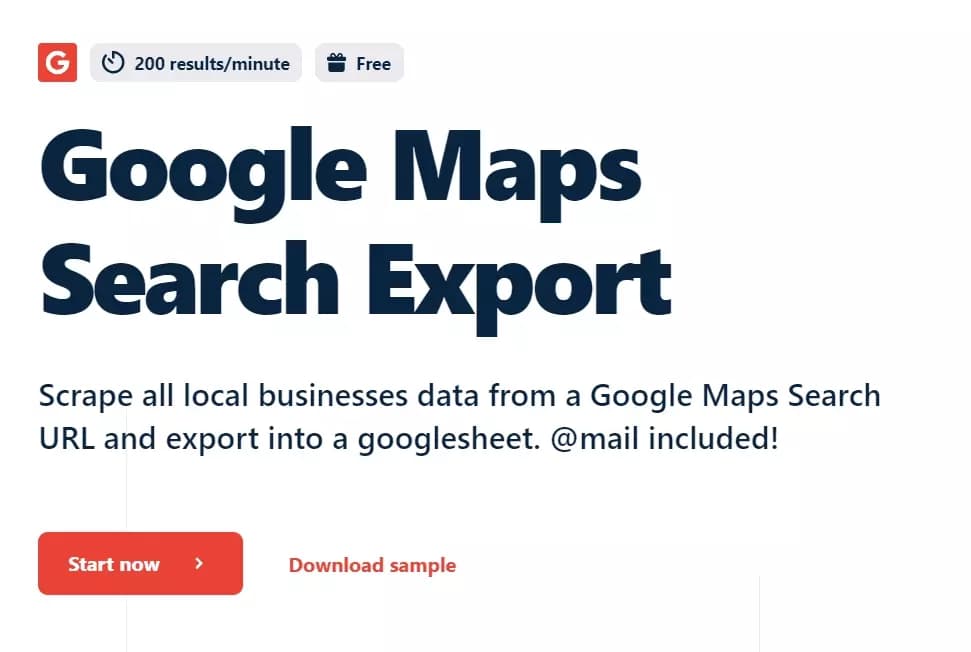
But is cold DM strategy really effective?
How effective is direct messaging?
SMS strategy didn’t give me desired results and when I started using Lobstr’s email enrichment service, I switched to cold emails from cold SMS.
But one more question that you might have in your mind.
What’s the best method for cold outreach?
Which cold outreach method is the best?
When it comes to cold outreach, the question of which method is the best doesn’t have a one-size-fits-all answer.
Each method has its own strengths, making it the best choice depending on your specific goals and audience.
| Method | Best For |
|---|---|
| Cold Emailing | Reaching a large audience |
| Cold Calling | Creating an immediate connection |
| LinkedIn Outreach | Professional networking |
| Direct Messaging | Informal outreach |
Cold Emailing is best for reaching a large audience with a scalable, structured message, making it ideal for B2B outreach and lead generation.
Cold Calling is perfect for creating an immediate, personal connection, allowing you to engage directly with prospects and handle objections in real-time.
LinkedIn Outreach is ideal for professional networking and B2B engagement, where you can leverage your network and build trust with decision-makers.
Direct Messaging is most effective for informal outreach, allowing for intimate, one-on-one connections, especially in freelancing or small business contexts.
The best strategy is often a combination of these methods, tailored to your specific objectives and the unique needs of your target audience.
Another intriguing question is – what’s the ideal time for cold outreach?
What is the best time for cold outreach?
Timing plays a crucial role in the effectiveness of cold outreach. The time of day, day of the week, and even seasonal factors can significantly impact your response rates.
Reaching out when your prospects are most likely to be receptive can make all the difference between your message being opened or ignored.
So what's the best time to do cold outreach?
Time of the Day

During this time, recipients are more likely to check their emails, making it an ideal window to get your message noticed.

These are times when people are likely to be at their desks, wrapping up their morning tasks or preparing to end their workday.
While specific data on direct messaging isn’t widely available, I'm using the best time to post content as a canon.
Day of the Week
Monday is often the best day to send cold emails. It’s the start of the workweek, and people are more likely to be planning their week and checking their inboxes.

Wednesdays and Thursdays are the best days for cold calling. These days are typically less hectic, making it easier for prospects to take your call.

The best days for social media engagement are also mid-week, particularly Wednesdays and Thursdays. People tend to be more active on social platforms these days.
When planning your outreach, consider the timezones of your prospects.
Sending an email at 8 AM might be perfect for someone in your local timezone but could land in the middle of the night for someone across the country.
Always adjust your outreach timing to align with the local time of your target audience.
Seasonal factors can also influence cold outreach success.
For example, reaching out during the holiday season might see lower response rates due to people being out of the office.
On the other hand, targeting specific times of the year when businesses are setting budgets or planning initiatives can be highly effective.
Follow-up duration
A good rule of thumb is to wait a few days after your initial outreach before following up.
For emails, waiting 2-3 days is often effective, while for calls, following up the next day or later in the week can keep you top-of-mind without being overly pushy.
Campaign duration
A longer campaign spread over several weeks allows for multiple touchpoints, increasing the chances of getting a response.
However, it’s essential to monitor engagement and adjust your strategy based on the response rate to avoid diminishing returns.
Now that we know what, why, where, who, and when — let’s learn how.
How to do cold outreach in 2024?
Every cold outreach campaign typically has 4 simple steps.
Let’s do them one by one.
Preparing for cold outreach
Preparing effectively is crucial to the success of your cold outreach campaign. It's a 3-step process.
- Identify target audience
- Research prospects
- Build a cold leads database (contact list)
1. Identify the target audience
Outline the characteristics of the businesses or individuals who benefit most from your product or service.
Break down your target audience into segments based on industry, role, company size, or other relevant factors.
For example, I want to pitch our Sales Navigator Leads Scraper to marketing and sales executives in North America.
2. Research prospects
Look into each prospect's company, role, and challenges they might be facing. This will help you tailor your outreach to their specific needs.
Identify the problems your prospect is likely dealing with that your solution can address. This will make your outreach more relevant and compelling.
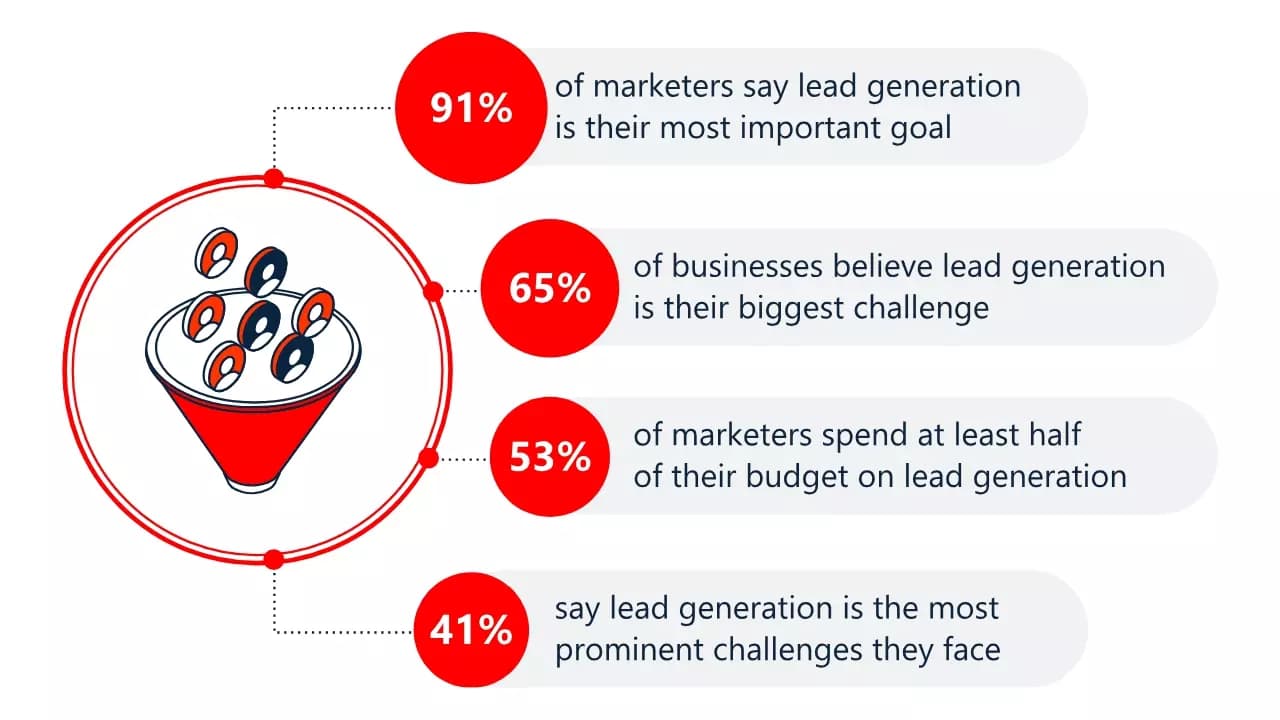
- 91% of marketers say lead generation is their most important goal
- 65% of businesses believe lead generation is their biggest challenge
- 53% of marketers spend at least half of their budget on lead generation
- 41% say lead generation is the most prominent challenges they face
3. Build a cold leads database (contact list)
Now collect names, email addresses, phone numbers, and social media profiles of potential leads.
You can use a CRM system or a spreadsheet to manage your contact list and keep track of your outreach efforts.
Also regularly update and verify contact information to avoid wasting time on incorrect or outdated leads.
Since my target audience is mostly found on LinkedIn, I’m going to target them using LinkedIn Sales Navigator.
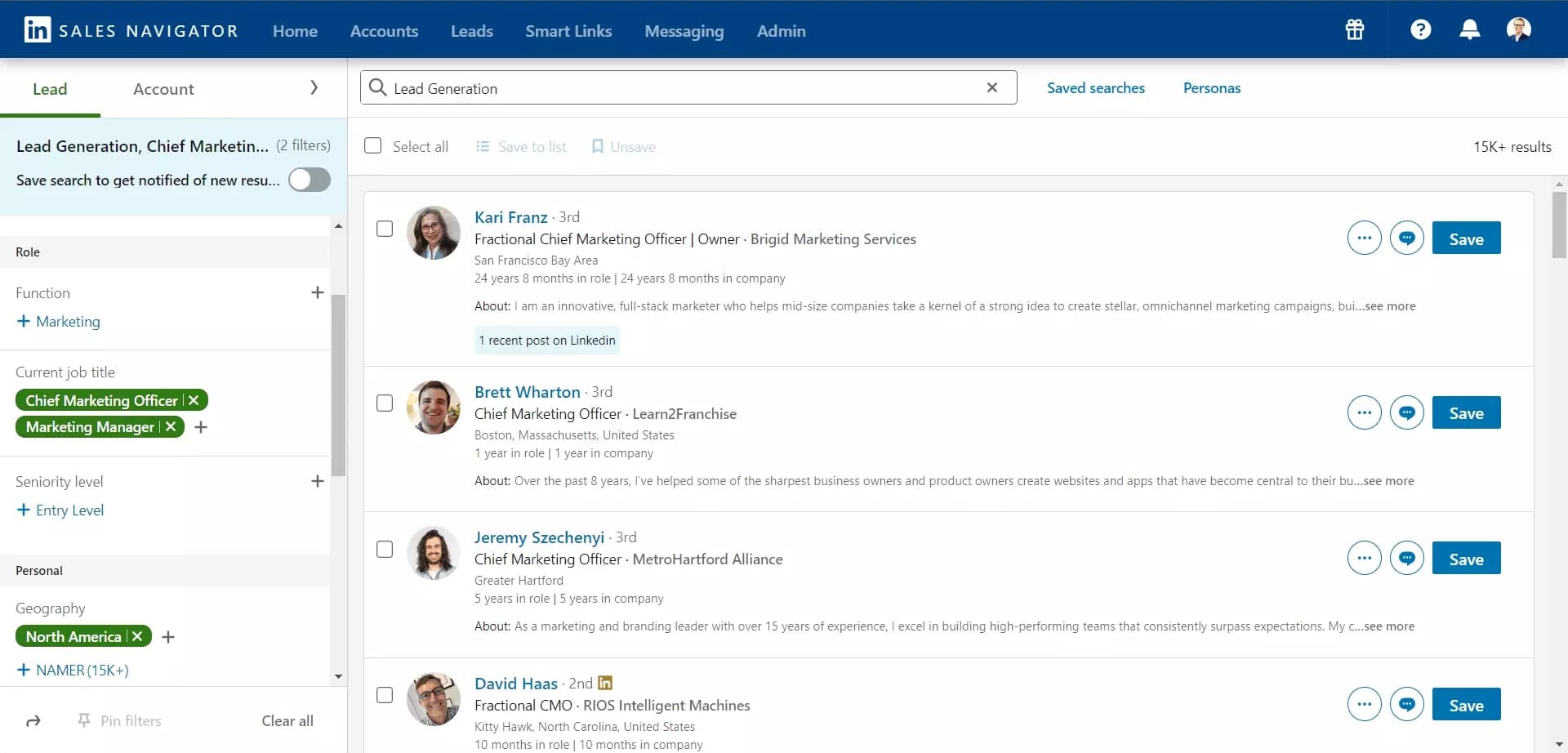
But how to collect leads from Sales Navigator?
This is the fun part. I'll use Sales Navigator Leads Scraper to identify potential clients, then pitch the product itself to those leads as a lead generation solution.

Now let’s move to step 2 of our cold outreach process – cooking the meal.
But before that, we have to select a strategy. Which strategy should I use? 🤔
Since I’m trying to reach 15k+ people, using LinkedIn or cold calling is not an ideal choice.
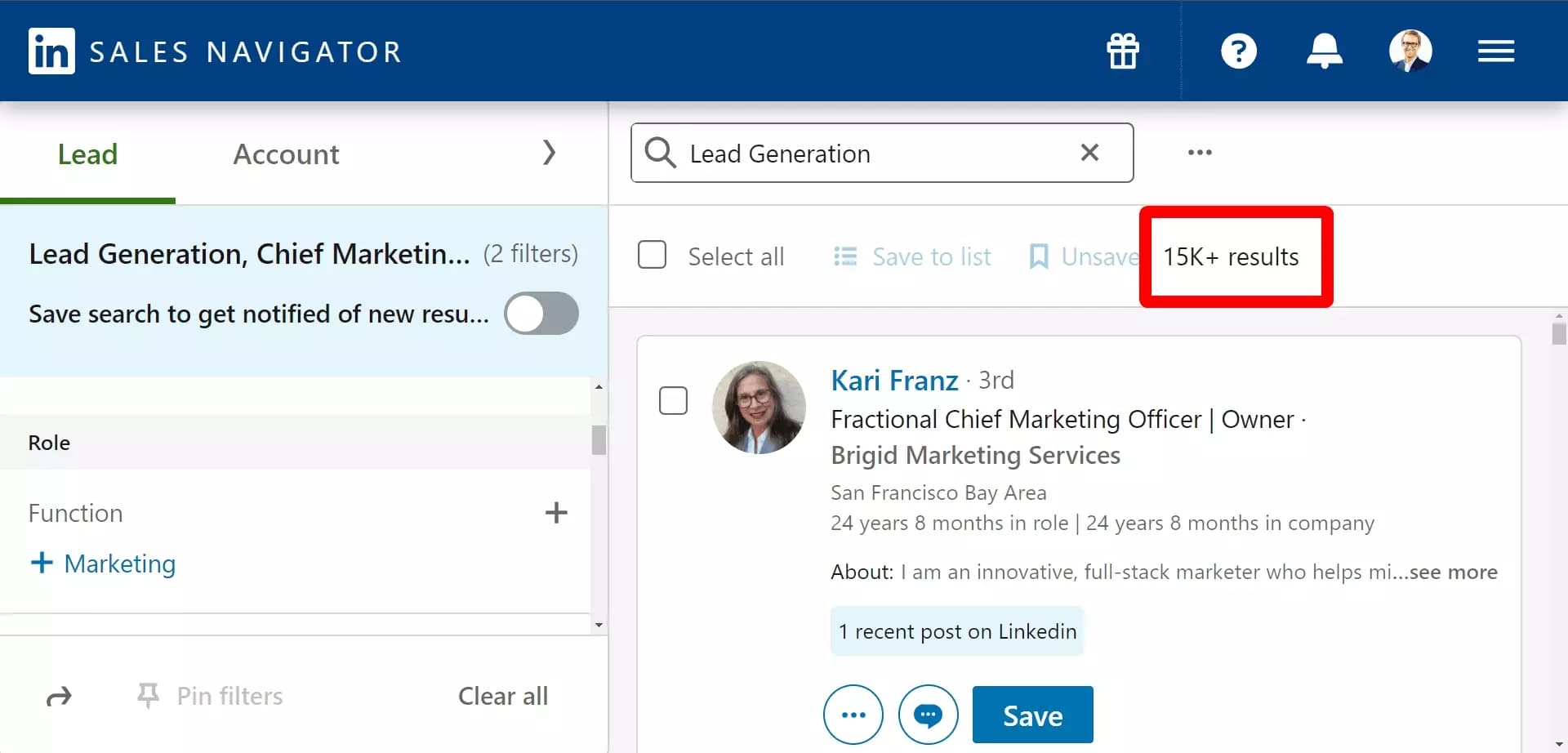
I’ll go with cold emailing.
How to do cold email outreach like a pro in 2024?
This step involves crafting a compelling cold email copy and sending emails to our prospects. Let’s first write a cold email copy.
How to write a killer cold email?
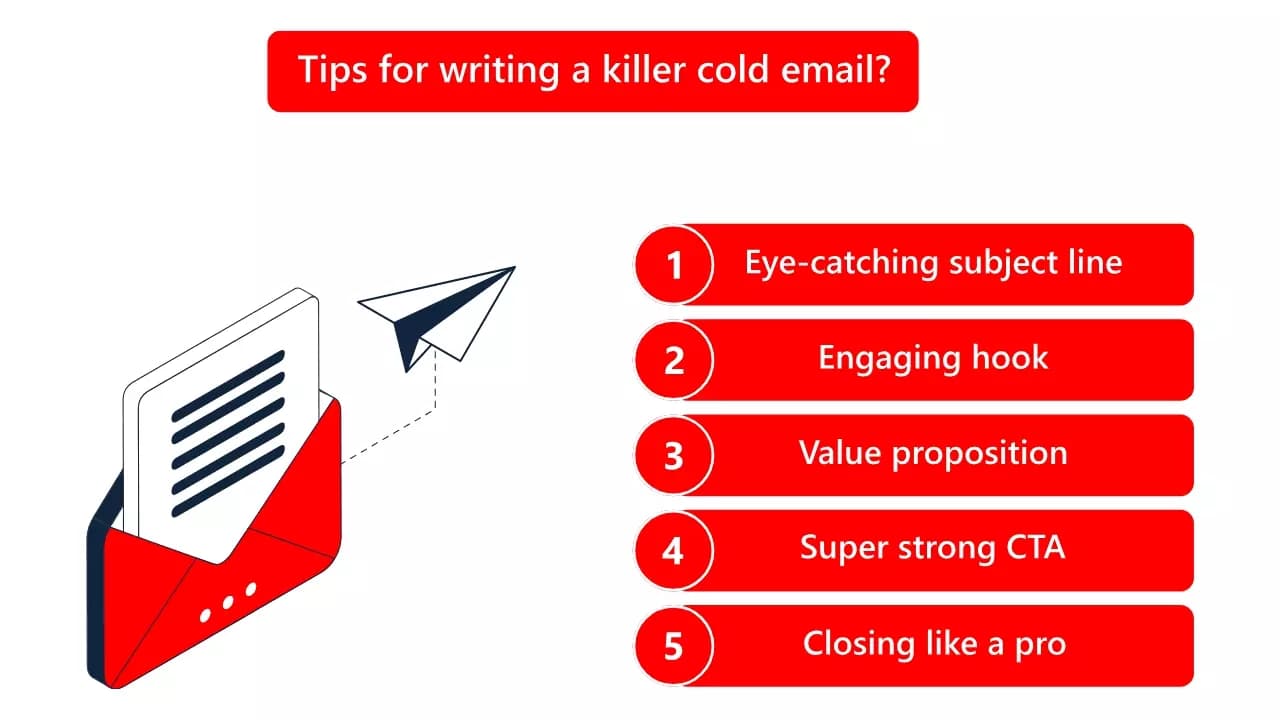
The best cold email copy consists of 5 key elements:
- Eye-catching email subject line
- Engaging hook
- Value proposition
- Super strong CTA
- Closing like a pro
Eye-catching email subject line
The subject line is the headline of your email—the first thing your prospect sees in their inbox. It’s crucial for capturing attention and enticing the recipient to open the email.
Make sure the subject line is clear, concise, and directly relevant to the prospect's needs or interests.
Use a compelling offer, highlight a key benefit, or create a sense of urgency to encourage an open.
Example: Get 1,500 Leads from Sales Navigator Daily for Freef
Engaging hook
The hook is the opening line of your email that immediately captures the prospect's attention and encourages them to keep reading.
Start with a statement that highlights a common challenge or need your prospect faces, backed by a relevant statistic.
This establishes credibility and piques interest in the solution you're about to present.
Example: Hey John, Struggling to find enough quality leads on LinkedIn without spending hours each day? You are not alone! 41% of marketers face the same challenge. But what if you could pull 1,500 targeted leads every day from LinkedIn effortlessly, without paying a cent?f
Value proposition
The value proposition is the core benefit your product/service offers. It’s the reason your prospect should care and continue reading.
This section should clearly communicate how your offering solves a specific problem or meets a key need.
Present the most compelling features and benefits of your product in a straightforward and impactful way.
Focus on what makes your product valuable and how it directly helps the prospect achieve their goals.
Example: With Lobstr's Sales Navigator Leads Scraper, you can: Scrape thousands of leads from Sales Navigator every month Collect 25 key data points about each prospect, including work emails and phone numbers Enrich your leads with verified contact details Scrape 100 profiles per minute Automatically export your data to Google Sheets for seamless analysis and outreachf
A super strong CTA (call to action)
The CTA (Call to Action) is a clear and compelling prompt that directs your prospect to take the next step.
It’s a critical component that drives action and moves the conversation forward.
Make your CTA specific, action-oriented, and easy to follow. Encourage the prospect to engage further by scheduling a demo, signing up for a free trial, or replying to the email.
The key is to remove any friction and make the next step as appealing as possible.
Example: Ready to supercharge your lead generation? Click here to create a free account and scrape up to 1,500 leads daily (for free). Let's make lead generation the easiest part of your sales process!f
Closing like a pro
The closing is the final part of your email that wraps up your message and leaves a strong, positive impression.
A well-crafted closing can reinforce your offer and keep the door open for future communication.
Close with a polite and confident sign-off, and include your contact information for easy follow-up.
A P.S line can be a powerful tool to reiterate your main point or offer one last incentive.
Example: Feel free to reply to this email if you have any questions or need more information. Best regards, Shehriar Awan Chief Nobody @ Lobstr.io P.S. Our free plan is free forever--start scraping 1,500 leads daily at no cost, with no expiration!f
You can use AI tools like Gemini or ChatGPT to write killer email copies and personalize them to add a human touch.
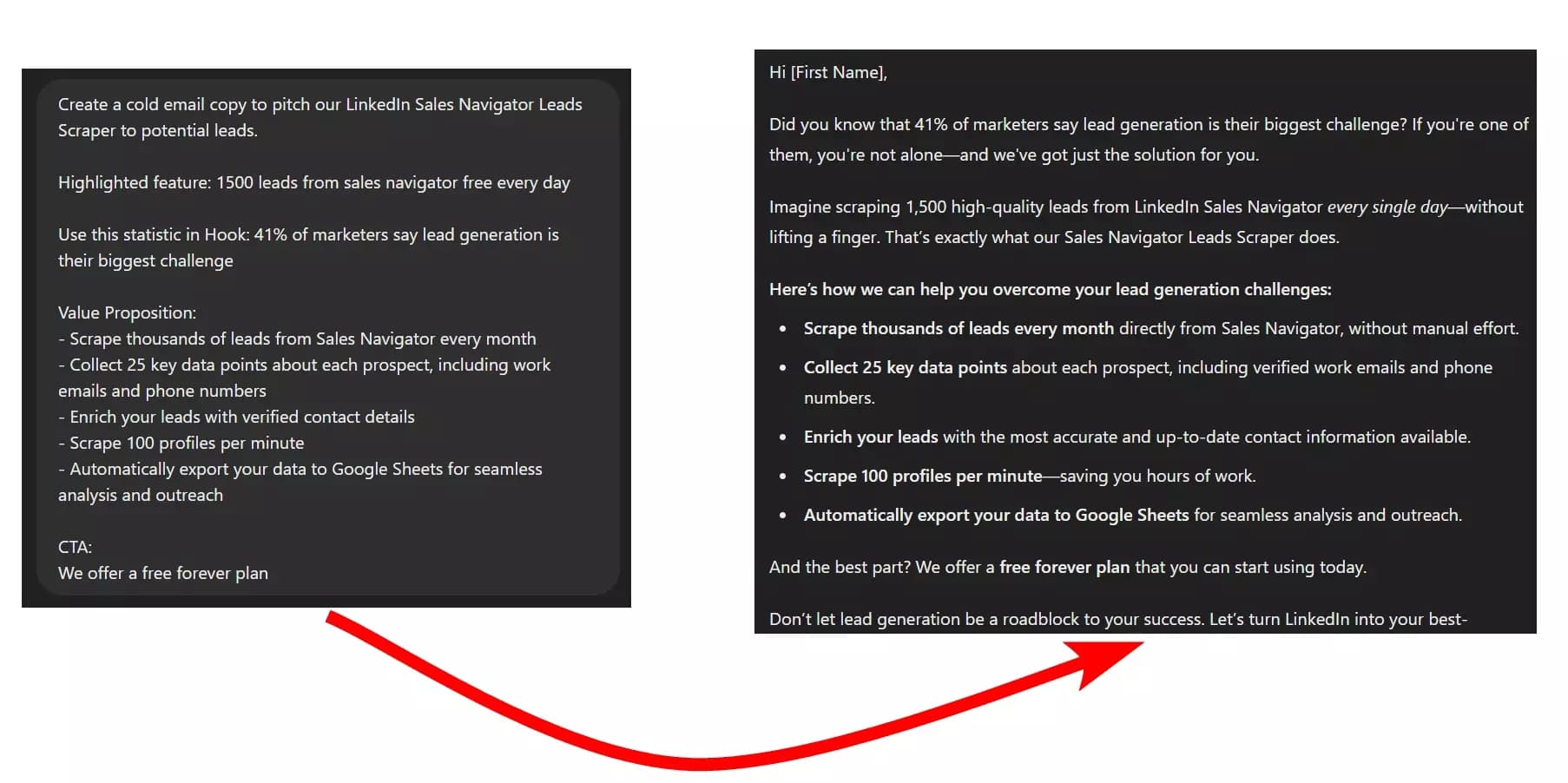
After crafting a killer cold email, the next step is sending it out to your targeted prospects. You can use an email outreach tool for that.
But what tools are good for sending emails?
What is the best tool to send cold emails from?
There are plenty of email outreach tools available online. You can explore them and choose the one that fits your needs.
Choose a tool that allows you to personalize your emails at scale, track performance, and automate follow-ups to maximize your chances of getting a response.
I recommend using Lemlist for your cold emailing needs.
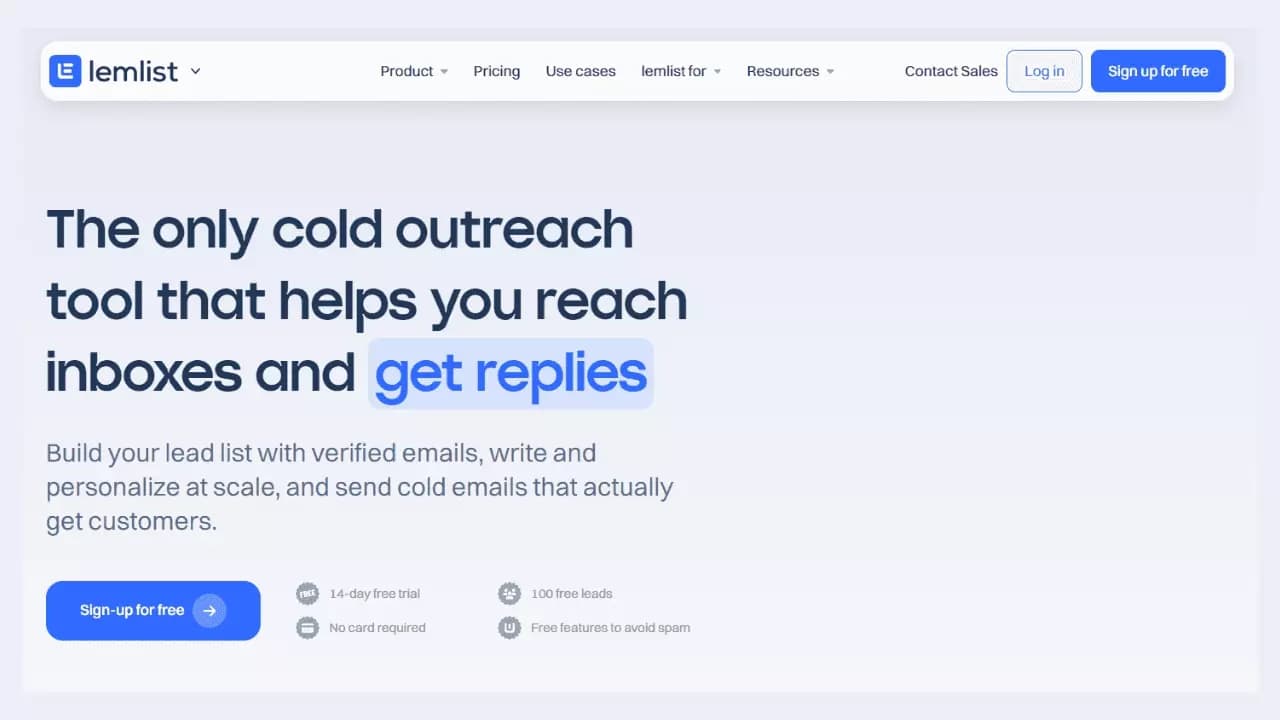
It is a powerful tool that lets you personalize every aspect of your emails.
Key metrics to track
You must track some key metrics to know how well your emails are performing and help you identify areas for improvement.
There are 3 key metrics you need to track for a cold emailing campaign.
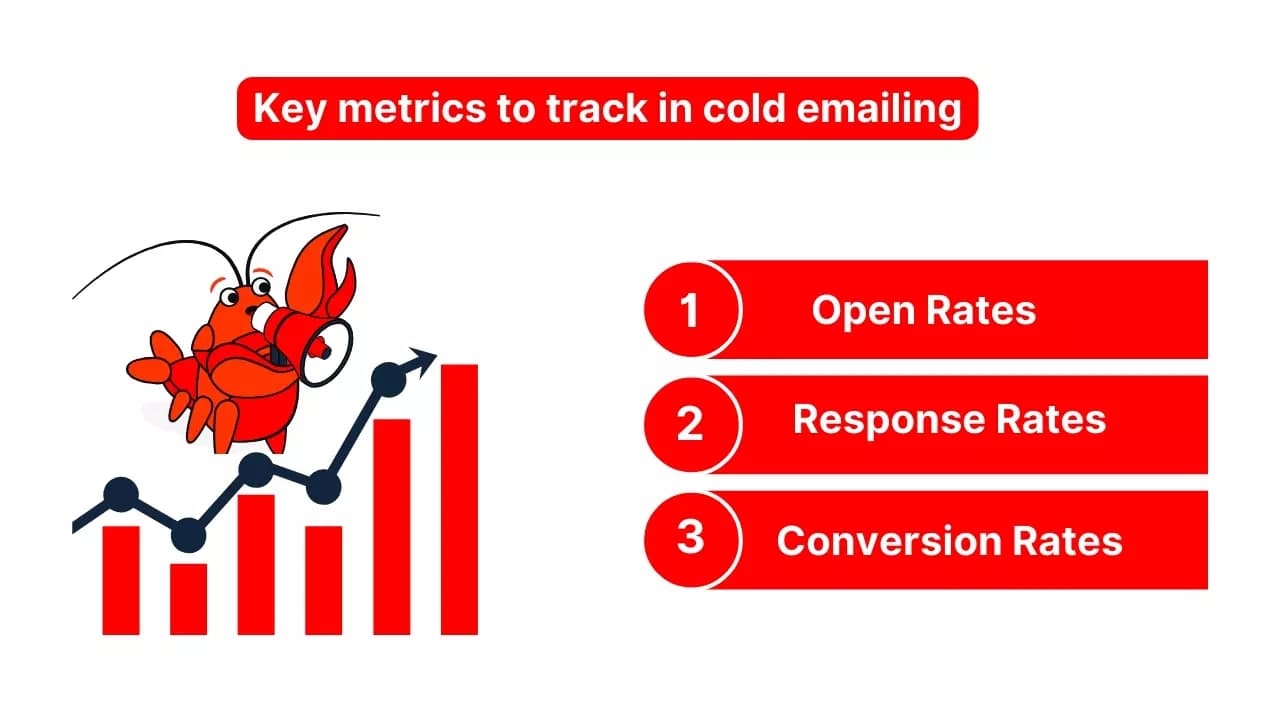
Open Rates
The percentage of recipients who open your email. High open rates indicate that your subject line is compelling and your targeting is on point.
Response Rates
The percentage of recipients who reply to your email. A strong response rate shows that your email content is engaging and relevant to your audience.
Conversion Rates
The percentage of recipients who take the desired action, such as signing up for a free trial or scheduling a call.
This metric directly reflects the effectiveness of your email in driving your end goal, whether it’s generating leads or closing sales.
This is just a very short overview of how to do cold email outreach.
Now let’s learn some strategies to get the most out of a cold outreach campaign.
7 cold outreach strategies to get the most out of your campaign
To make your cold outreach efforts more effective, it's important to use strategies that grab attention and connect with your audience.
That's why I have researched the 7 best cold outreach strategies for B2B outreach.
- Multi-channel outreach
- Personalization at scale
- Building bond before pitching
- Social proof
- Power of storytelling
- Timing and scheduling
- A/B Testing for continuous improvement
Whether you’re using cold emails, calls, LinkedIn outreach, or direct messaging, these seven strategies can help you get better results.
Let's break them down one by one.
1. Multi channel outreach
The multi-channel approach means using multiple communication channels to reach out to prospects.
In our case, using more than 1 strategies I mentioned above or using all 4 of them is multi-channel approach,
By spreading your efforts across different platforms, you increase the likelihood of connecting with your audience in a way that suits their preferences.
Here’s how to implement it:
- Identify which channels your target audience uses most often
- Customize your outreach message to fit each specific platform
- Be consistent in your messaging across all channels
- Track the effectiveness of each channel to optimize your strategy
2. Personalization at scale
Personalization at scale means tailoring your outreach messages to individual prospects while still being able to reach a large audience.
Instead of generic messages, you use data to make each interaction feel personal, which increases engagement and response rates.
How to do that?
- Use data like the prospect’s name, company, and pain points to personalize messages
- Use AI to personalize bulk emails or messages without losing the human touch
- Group prospects by common characteristics to make personalization easier
- Focus on personalizing subject lines, intros, and specific value propositions
3. Building bond before pitching
Building a bond before pitching means establishing a relationship with your prospects before making a sales offer.
This approach helps build trust and makes the prospect more receptive to your pitch and it’s easy to implement.
- Start by engaging with the prospect’s content or interests on social media
- Share helpful insights or resources before pitching your product
- Use personalized messages that show genuine interest in the prospect’s needs
- Focus on relationship-building rather than immediately pushing for a sale
4. Social proof
Social proof includes testimonials, case studies, and success stories to build credibility and trust with your prospects.
By showcasing how others have benefited from your product or service, you can persuade prospects that they will see similar results.
Here's how it works.
- Include quotes or endorsements from satisfied customers in your outreach
- Provide detailed examples of how your product or service solved problems for other clients
- Use data and statistics to demonstrate the success and impact of your product
- If applicable, mention endorsements from industry leaders or influencers
5. Power of storytelling
Using compelling narratives makes your message more engaging and memorable.
By sharing stories that resonate with your prospects' experiences or challenges, you create a stronger emotional connection and make your outreach more impactful.
How to implement it?
- Develop a story that highlights a problem your prospect faces and shows how your solution helped
- The story needs to be brief and to the point to maintain the prospect's interest
- Focus on specific outcomes or benefits that are relevant to the prospect
- Tailor the story to reflect the prospect’s industry or personal experiences
6. Timing and scheduling
Reaching out to prospects at the most opportune moments increases the chances of your message being seen and acted upon.
Effective timing considers factors like the best times of day, days of the week, and other relevant scheduling elements.
How to implement it?
- Send emails or messages at times when prospects are most likely to be active
- Adjust your outreach schedule based on the prospect’s local time zone
- Avoid reaching out during holidays or busy seasons
- Schedule follow-ups based on the prospect’s response time and engagement
7. A/B testing for continuous improvement
A/B testing means comparing two versions of your outreach to determine which performs better.
By testing different elements like subject lines, messaging, or send times, you can continuously improve your strategy based on real data.
How to do A/B testing?
- Choose one element to test, such as subject lines or call-to-actions
- Develop two versions of your outreach with one key difference
- Divide leads into 2 groups and send each version to specific group
- Track the performance of each version to see which yields better results
- Use insights from the test to make data-driven improvements to your outreach strategy
Now since the next stage of cold outreach is follow-up, let’s see some follow-up strategies to increase success rate.
3 follow-up strategies to increase conversions
Effective follow-ups can make the difference between closing a deal and losing a prospect.
Here are three key strategies to boost your follow-up game:
1. Timing and frequency of follow-ups
Timing and frequency refer to how often and when you follow up with prospects.
Optimal timing ensures that your follow-ups are timely and relevant, increasing the chances of a positive response.
- Send your first follow-up soon after the initial outreach
- Space out subsequent follow-ups based on the prospect's response or engagement
- Choose times when the prospect is most likely to be available and receptive
- Adjust the frequency based on how the prospect is responding to previous follow-ups
2. Content of follow-up
Crafting follow-up messages that provide value will remind the prospect of your initial outreach, and encourage further engagement.
Effective follow-up content is clear, relevant, and personalized.
- Briefly summarize the previous contact and the value you offer
- Include additional insights, updates, or relevant content that may interest the prospect
- Make it easy for the prospect to take the next step
3. Maintaining persistence without being annoying
Maintaining persistence means continuing to follow-up with prospects without becoming a nuisance.
It's about finding the right balance between being proactive and respectful.
- Establish a reasonable number of follow-ups to avoid overwhelming the prospect
- Change your messaging and channel to keep the follow-ups fresh and engaging
- If a prospect indicates they are not interested or asks to stop, honor their request promptly
But there are some common mistakes people make in their cold outreach campaigns which might make all your efforts useless.
9 common mistakes to avoid in cold outreach
To maximize the effectiveness of your outreach campaigns, be aware of these common pitfalls and how to avoid them.
| Mistake | Example | Fix |
|---|---|---|
| Lack of personalization | Sending generic messages | Tailor your outreach with the prospect's name and needs |
| Poor timing | Contacting prospects at inconvenient times | Use optimal times for outreach based on preferences and time zone |
| Ignoring gatekeepers | Overlooking assistants or receptionists | Build relations with gatekeepers and provide value |
| Overly salesy approach | Being too aggressive or focused solely on selling | Provide value and address the prospect’s problems |
| Ignoring negative feedback | Not acknowledging or responding to rejection | Respectfully address feedback and refine your approach |
| Inconsistent follow-ups | Failing to follow up regularly or strategically | Establish a consistent follow-up schedule and track responses |
| Disregarding email etiquette | Ignoring proper email etiquette, such as grammar and clarity | Ensure emails are well-written, professional, and error-free |
| Not listening actively | Not paying attention to the prospect’s needs or feedback | Listen carefully and adjust your approach accordingly |
| Overlooking the importance of value | Failing to communicate the value you offer | Highlight how your product or service solves specific problems and benefits the prospect |
Now let’s answer some frequently asked questions.
FAQs
Is cold email marketing legal?
Yes, cold email marketing and any cold outreach activity is legal, but you must follow specific laws and regulations of your region like:
What is email deliverability?
Deliverability is the ability of emails to reach the inbox. Almost every email marketing tool has this feature.
It's super helpful to track whether your email is delivered to your prospect's inbox or landed in a spam folder.
How can I improve the deliverability of my cold outreach emails?
- Use a verified domain
- Avoid spammy language
- Keep your email list clean
- Personalize your emails
- Monitor your sender reputation
What type of email signature is most effective for cold outreach?
Use a simple, professional email signature that includes your name, job title, company name, and contact details.
You can add a company logo and LinkedIn link, but keep it clean and uncluttered.
